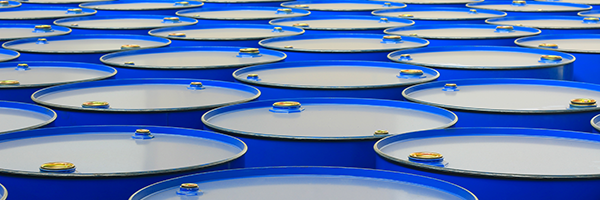
April 7, 2023 | Daily JAM, PXD |
The Wall Street Journal reported today, Friday, April 7, that Exxon Mobil (XOM) has held preliminary, informal talks with Pioneer Natural Resources (PXD) about a possible acquisition.

February 28, 2023 | Daily JAM, Dividend Income, Jubak Picks, PXD |
On Friday, shares of Pioneer Natural Resources (PXD) fell on a Bloomberg story reporting rumored talks between the Permian Basin oil shale producer and Appalachian natural gas producer Range Resources (RRC). On Monday shares of Pioneer rebounded as the company denied that it was in acquisition talks. The lesson? Investors really don’t want Pioneer to spend money on acquiring more assets.

February 23, 2023 | Daily JAM, Dividend Income, Jubak Picks, PXD |
Wednesday, February 22, Pioneer Natural Resources (PXD) reported better-than-expected adjusted earnings for the fourth quarter of 2022 while revenues came up short of Wall Street estimates. Revenue was still up 18% year-over-year to $5.1 billion. Fourth quarter net income nearly doubled to $1.48 billion or $5.98 share, from $763 million, or $2.97 a share, in the fourth quarter of 2021. The company declared a quarterly total dividend of $5.58/share, made up of a $1.10 base dividend and a $4.48 variable dividend. The total annualized dividend yield is approximately 11%.Which is why I’m adding the shares to my Dividend Portfolio today.

February 22, 2023 | Daily JAM, Dividend Income, INTC, Jubak Picks |
So it wasn’t much of a surprise to most investors–although some of us were hoping that Intel (INTC) would hold its dividend steady after a big bond offering in the last few weeks. But today Intel cuts its dividend by 66% to 12.5 cents a share from a prior 36.5 cents. The stock dropped only 2.26% on that big news.

February 8, 2023 | Daily JAM, Dividend Income, INTC, Jubak Picks |
The possibility that Intel (INTC) would cut its dividend has been hanging over the stock price since the company announced one of the ugliest quarters I’ve seen in a while on January 26. No question why. Intel’s adjusted free cash flow was a negative $4.075 for the full 2022 year. And with the company looking to invest heavily in new fabs, the $6 billion a year in dividend payouts looked like a potential source of investing cash. And certainly, you wouldn’t want to buy into a stock paying 5.09% (as Intel did today) if the company was about to cut its dividend. But a dividend cut looks less likely today.

February 2, 2023 | Daily JAM, Dividend Income, Videos |
Today I posted my two-hundred-and-thirty-second YouTube video: Quick Pick Intel Today’s Quick Pick: Intel (NASDAQ: INTC). Intel’s revenue and earnings report last week was terrible. It was a classic kitchen sink quarter, where the company laid out all the bad news at once, so investors only have positive things to look forward to. The stock was trading at $28 on January 31, and the 52-week range is $52.5 – $24, so we’re currently pretty close to the bottom of the range. The 2022 loss is a little over 38% but year to date, even with all of this bad news, the stock is actually up 5.75. If you have a longer time range, this is the time to buy Intel. We’re close to a bottom here and their plans going forward include new chips and, in 2024, new technology that can really compete with AMD. Additionally, Intel’s fab business, where they manufacture chips designed by other companies, went up about 30%. They are one of the few companies left that are actually manufacturing the chips, (their biggest competitor being Taiwan Semiconductors.) As Intel improves its own technology, its fab business will grow and become more appealing to chip designers. As long as Intel hits its projected milestones throughout 2023, this is a good buy for 2024.

December 8, 2022 | ABBV, Daily JAM, Dividend Income, MMM |
Once a company has put in the time and money to make the Dividend Aristocrats list, the company isn’t likely to squander that investment just because a recession looms. To make the list–and garner a big chunk of cash from conservative dividend investors–a company has had to pay a dividend for a least 25 consecutive years and has had to raise that dividend every year. A company like 3M (MMM), which owns a 64-year record of paying and raising its dividend payout, is as close to a dividend sure thing as exists. Which is why it’s not surprising that AbbVie (ABBV), which owns a 50-year record of paying and raising its dividend, announced that it would raise its dividend in 2023 to $1.48 a quarter with the February 2023 payout. That would bring the annual dividend yield to 3.5% But…

December 7, 2022 | Daily JAM, Dividend Income, DOW |
The November rally was kind to Dow (DOW) with the stock up 10.4% from November 1 through December 1. The shares have given back some of that lately, but I’d still like to book any gains here ahead of a possible recession or at least a further economic slowdown in 2023.

November 30, 2022 | BHP, Daily JAM, Dividend Income, Special Reports |
You have to do a fair amount of work rearranging the dividend numbers for BHP (BHP) to understand why this diversified commodities producer makes this list. First, throw that 11.02% dividend yield reported on Yahoo Finance and other sources. As part of its corporate strategy of moving away from fossil fuels and investing in expanding existing copper production and in opening its first potash mine (in Canada at a cost of $5.7 billion), BHP sold its petroleum unit. Part of the big “dividend” distribution in fiscal 2021 and 2022 is a result of the company distributing the shares in the purchaser it acquired in payment for that deal to BHP shareholders. Of the $7.11 paid in dividends in fiscal 2022, for example, $3.86 came from the distribution of those shares. If you buy BHP now, you can’t expect a repeat of that distribution of shares. (BHP also sold its U.S. onshore petroleum assets in 2019.) So the question is what dividend payout can you expect from BHP in 2023?

November 21, 2022 | Daily JAM, Videos |
Today I posted my two-hundred-and-eighth YouTube video: Quick Pick NiSource. This week’s Quick Pick is NiSource (NYSE: NI). If you saw my last Trend of the Week video, you know that I believe the dip in utilities represents a good buying opportunity as utilities make the transition away from coal and natural gas with an eye toward the future of electricity. Investors have already started “rewarding” some utility stocks, like Eversource Energy (NYSE: ES) and NextEra Energy (NYSE: NEE), because they see these utilities starting that transition. Which means, of course, that these stocks have been bid up on that recognition. Eversource is rated by Morningstar as 6% overvalued and NextEra, which owns Florida Power & Light, is rated at fair value by Morningstar. The utility I’m looking at is NiSource, which largely services Indiana and Ohio—not generally considered bastions of cutting-edge green energy technologies. But! Goods going from coast to coast necessarily travel through those states, and as trucking companies make the transition to electric, the utility companies that service those areas will need to provide the power. NiSource is at the beginning stages of its own transition away from coal and toward renewable sources. The stock currently trades at a 20% discount, according to Morningstar, with a 3.65% dividend, higher than both Eversource and NextEra. NiSource says they’re expecting 6-8% annual earnings growth over the next 10 years and they’ve started investing in renewables in Indiana and Ohio. I think this is a stock that will start to get recognized as committing to the energy transition and I’ll be adding it to my dividend portfolio.

November 21, 2022 | Daily JAM, Special Reports |
I know I’m not getting any older. Just better. And I’d assume that’s true for you too. But sources tell me that Canadians–yes, Canadians–are aging. And that there’s a growing market for retirement living facilities in Canada. According to Statistics Canada, the current supply of long-term care and retirement suites is 450,000. And by 2038 Canada will have a need for an additional 430,000 suites. Sounds like a growth market to me. And right now you can buy units in the Chartwell Retirement Residences Real Estate Investment Trust (CWSRF) with a 7.61% dividend yield.

November 17, 2022 | Daily JAM, Dividend Income, Jubak Picks, PXD, Special Reports |
When I put together my Special Report: “5 Safe Dividend Stocks Paying 6% or More,” one key requirement was that the company showed a long track record of raising dividends every year and the clear potential to continue to raise dividends every year. That formula could turn a 6% annual dividend yield now into 8% or 9% or even more over the next ten years. A safe almost guaranteed 10% yield at the end of 10 years strikes me as a very attractive prospect, especially given how tough I think the financial markets are going to be over the next five years or more. (For more on that outlook see my recently revised Special Report: “Your Best Investment Strategy for the Next Five Years.”) But I realized, looking at all the high-yield stocks that didn’t make the cut for that report that the requirement for a high-probability trend of higher dividends each year for the next 10 years, that this requirement left a lot of stocks paying very attractive high dividends now on the cutting room floor. Stocks paying 8% or more got left off the list because I didn’t see a commitment at the company to continued dividend increases every year or enough growth in free cash flow to make it possible for a company to raise or maintain its dividend through the ups and downs of the business cycle. These stocks paying 8% or more were very safe bets to continue paying that yield for the next year or two. But 10 years? Too much uncertainty. Which doesn’t mean you shouldn’t own some of these stocks now. An 8% or better yield for a couple of years is a very attractive prospect given how uncertain the economy and the stock market are right now. And an investor has a very simple remedy if a company looks like it can’t or isn’t committed to sustaining that yield. Sell the stock. So with all that in mind, I’ve put together a list of five “outlier” dividend stocks paying 8% or more at a time when the SPDR S&P 500 Trust ETF (SPY) has a yield of just 1.6%.













